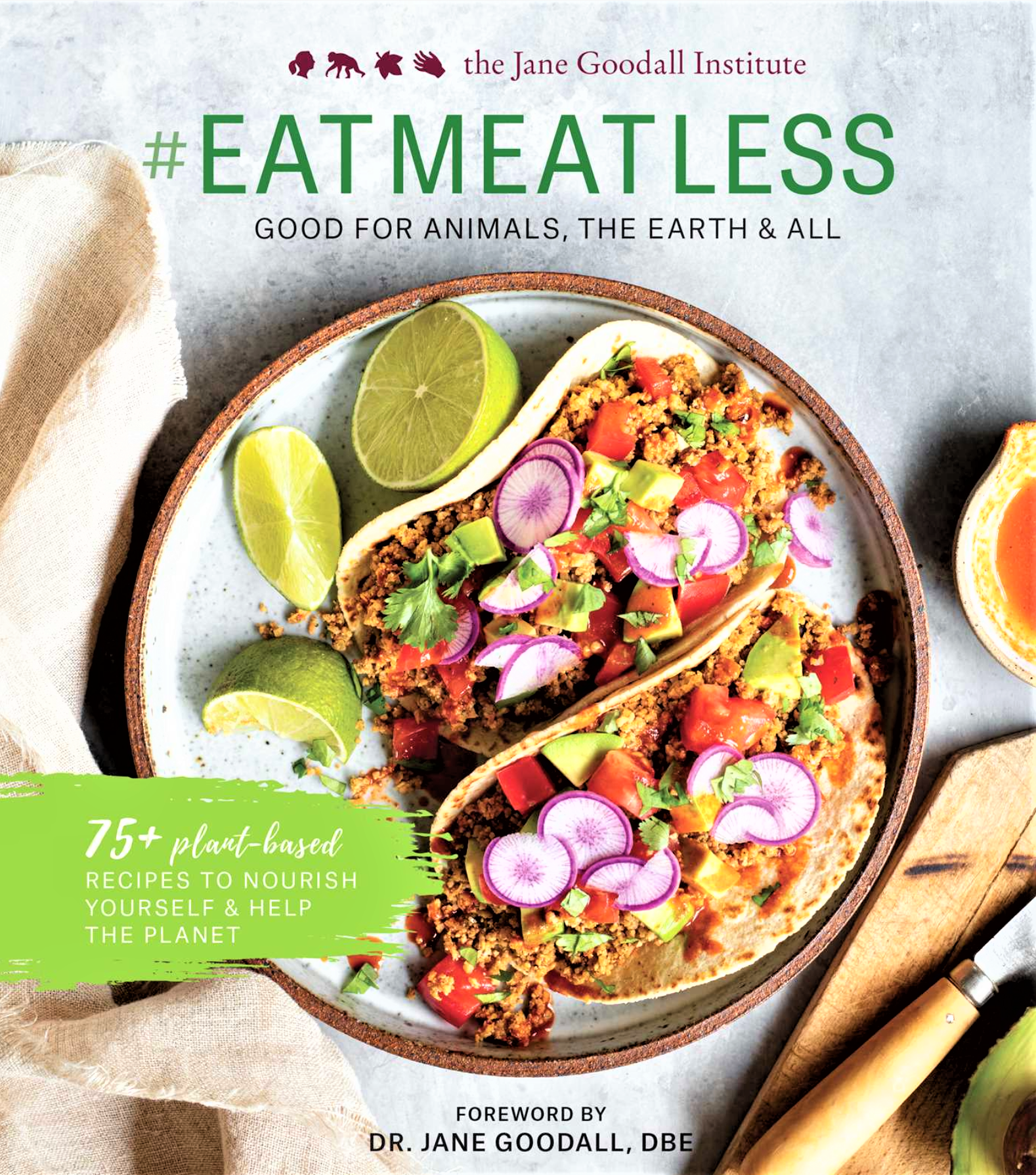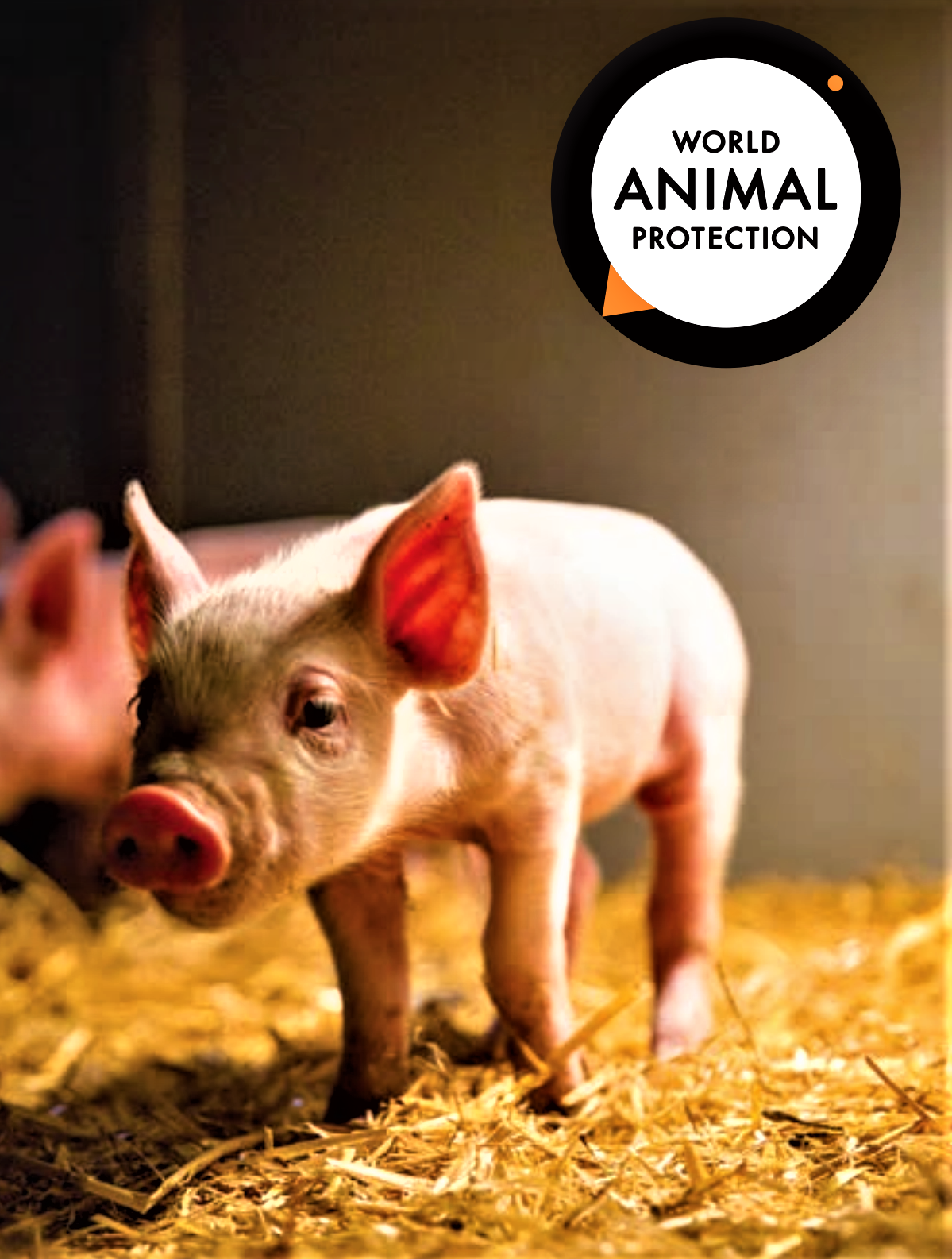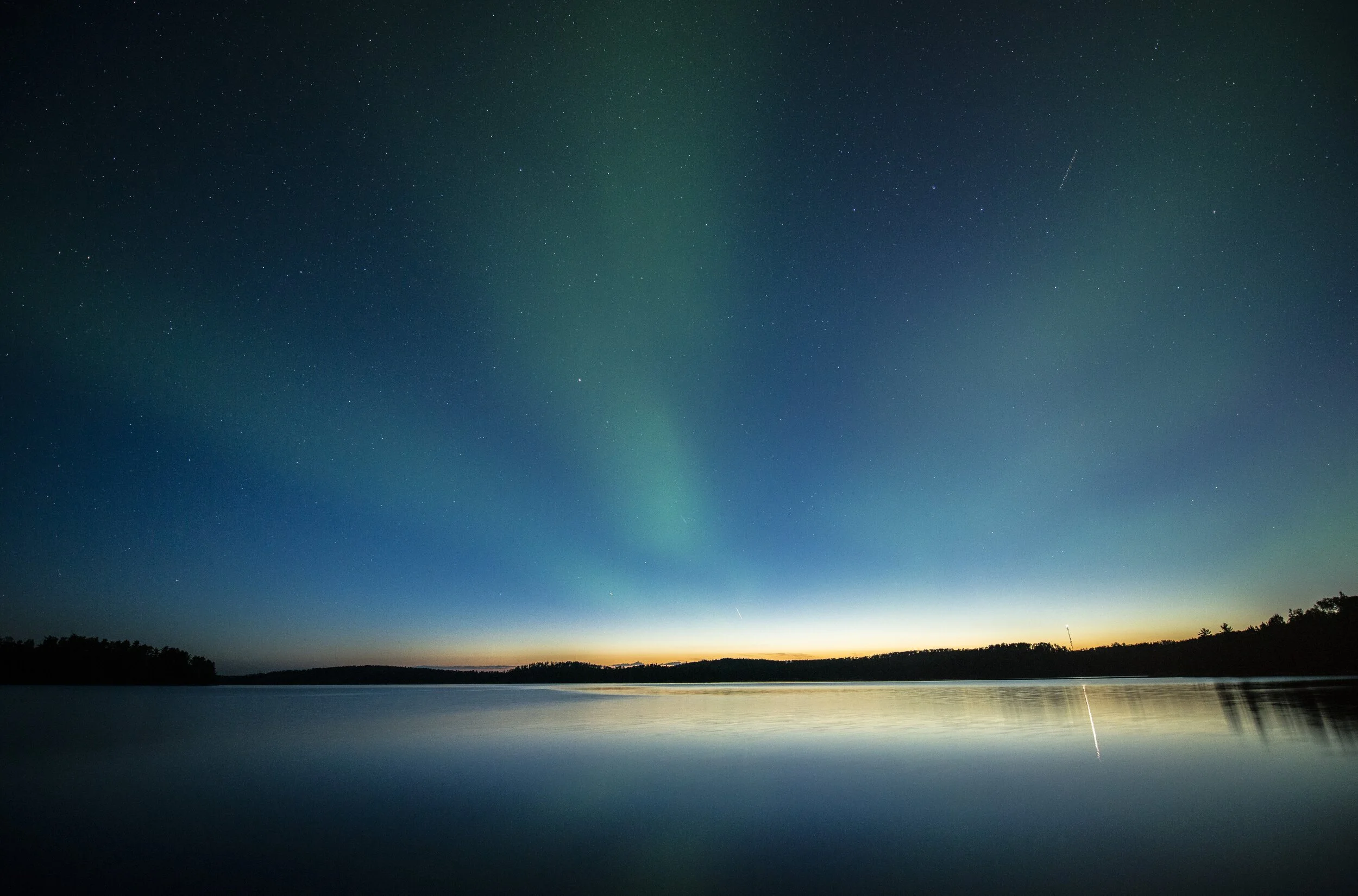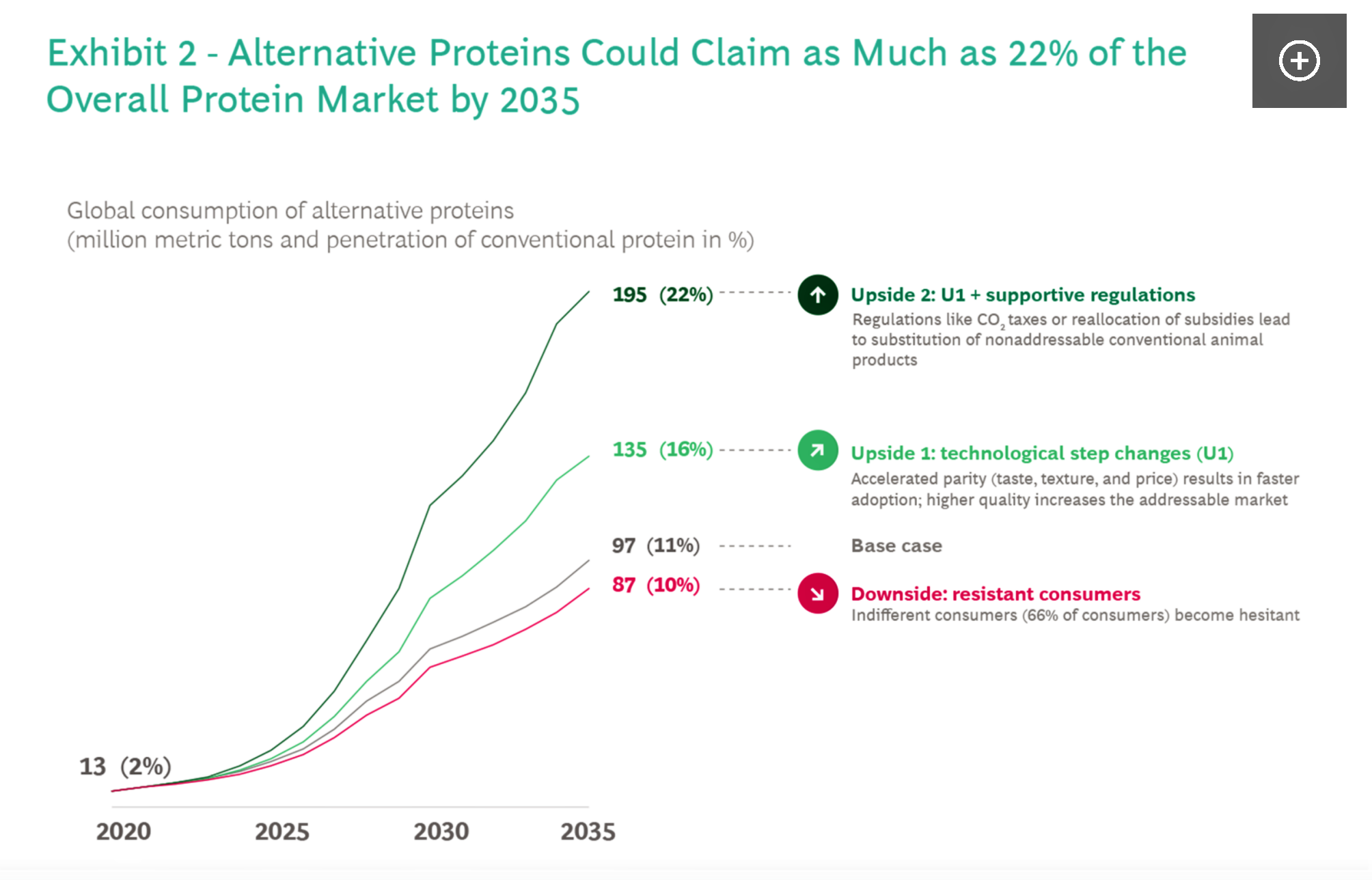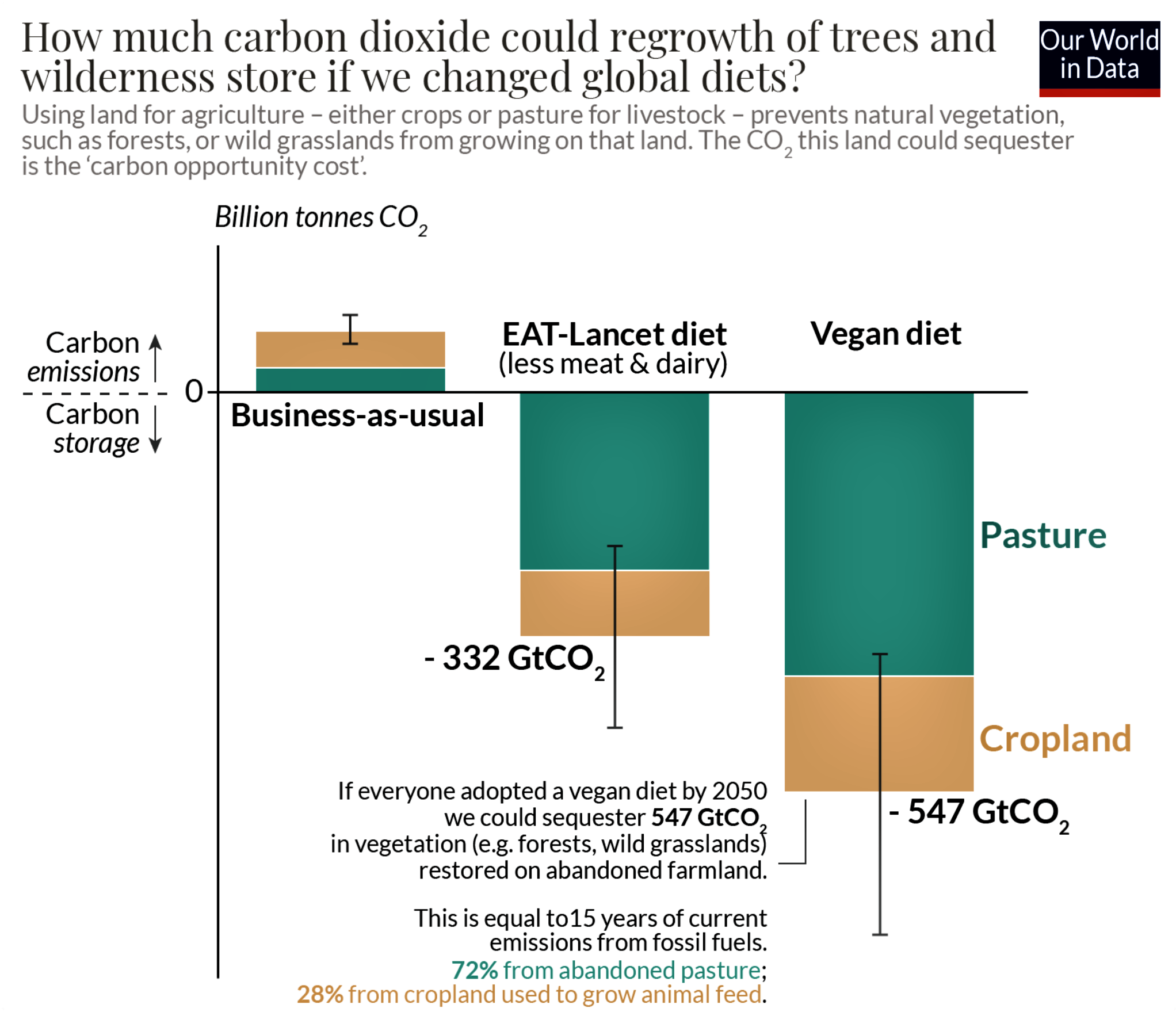Animals
Seaweed Won’t Deliver Eco-friendly Burgers
A new study shows that seaweed feed additives can reduce the huge amount of methane that comes from cows by 82%. This seems like a climate-friendly solution for burger lovers. But a deeper look into the weeds shows that isn’t the case. Two respected researchers say that practical limitations mean the climate benefit is minimal, perhaps only about 8.8%. Even if enough of the specific seaweed could be found to feed 1.5 billion cattle, it could realistically only be fed to cattle in feedlots during their last few months before slaughter. But about 80% of emissions are produced by cows digesting pasture grass before they reach the feedlot. The industry will tout the seaweed solution as a low-carbon, guilt-free way to eat burgers. Don’t buy it.
Food
Starting to Eat Plant-based
Studies show that interest and investment in plant-based eating continues to grow. People are changing what they eat for health reasons, concerns about food safety, the environment, climate change and animal welfare. And the transition is being fuelled by increasing evidence supplied by numerous scientific studies explaining the benefits of eating plant-based and recommending people – especially in richer nations – reduce their consumption of meat and dairy. However, people need alternatives. Happily, there are far more tasty plant-based food choices on supermarket shelves and restaurant menus – including fast food chains – than ever before, but what about food we prepare at home? People need recipes, websites and ideas on what to eat to help make the transition. We’ve got it covered in our recent blog.
the Climate Crisis
You Can Watch Brazilian Forests Make a Come-back
Here’s some news on reforestation as opposed to deforestation coming out of Brazil. That nation did include forest restoration in its commitment to the Paris climate agreement with the aim of revitalizing 29 million acres by 2030. And it’s working. You can watch the progress in real time at the Brazilian Restoration and Reforestation Observatory — an online mapping tool which uses satellite imagery and local data. It was launched last month by the Brazilian Coalition on Climate, Forests and Agriculture with support from the World Resources Institute (WRI). You can learn how to use it by logging into a webinar (offered in English and in Portuguese). You can also meet the people doing the work in WRI’s Faces of Restoration videos.
words of wisdom
“Making peace with Nature is the defining task of the 21st century. It must be the top priority for everyone, everywhere.”
— Antonio Guterres, UN Sec-Gen.
“They had ample flavour and appeal on their own. Eating them, I felt I was doing good without sacrificing all that much.”
— NY Times columnist Frank Bruni, on tasting fermentation-derived proteins. Read story here.
Photo: Planet Friendly News
on the horizon
Source: Simon & Schuster
More Ammunition For the Food Revolution
While discussing the launch of The Jane Goodall Institute’s first ever cookbook which supports plant-based eating, the legendary ethologist and environmentalist Dr. Jane Goodall, didn’t mince words. “Vegan food used to be tasteless and awful,” she told the American Association of Retired Persons (AARP) but today “really good vegan cooking is some of the best I've ever tasted”. Titled: Eat Meatless: Good for Animals, the Earth and All, the book offers more than 75 sustainable, plant-based, planet-friendly recipes that are both healthy and inspiring.
A vegetarian for decades and now vegan, Goodall — who wrote the cookbook's foreword and offers nuggets of wisdom throughout — said, “It's becoming more and more clear that the obsession with eating meat and dairy products and eggs is totally destroying the environment. It's creating methane, it's wasting water, and it's bad for our health."
“And I thought ‘I don’t want anything to do with that’.”
Goodall grew up in the U.K. eating meat. But while reading Peter Singer's book Animal Liberation on an airplane, she had an epiphany. “I looked at this meal they served me — it was a bit of chicken — and I realized that it represented fear, pain and death. And I thought, ‘I don't want anything to do with that.’ And that was the end of my eating any kind of meat."
While her initial reasons for eschewing meat were “ethical and purely about animals,” they are now also about the environment and human health. Along with cardiovascular benefits, Goodall points to growing research that links meat to human antibiotic resistance — and ultimately, she says, to superbugs.
The need to transform food systems away from the damage being done by industrialized animal agriculture toward greater sustainability and plant-based products has become an imperative.
As The Jane Goodall Institute says on its website, “ … we face some of the greatest challenges of our time including the climate crisis, unparalleled habitat loss, millions of animals suffering in factory farms, and the spread of zoonotic disease. This is an urgent issue, as scientists forecast that pandemics like COVID-19 created by a zoonotic spillover event will be one of many if we do not fundamentally change our current systems including animal agriculture. As a solution, this book provides a proactive and approachable way for individuals to understand their role in embracing plant-based lifestyles through inviting and exciting recipes and reflections.”
Banana pancakes. Photo: Erin Scott/The Jane Goodall Institute/Simon & Schuster
Aimed at those who are looking to incorporate healthier dietary practices, as well as those interested in environmental sustainability and animal welfare, the book’s collection of recipes shows the how and why of plant-based eating. It gives people the tools they need to take charge of their diet and play a role in improving human and environmental health and the well-being of animals.
Goodall stresses it's never too late to tweak your diet. She offers a simple suggestion for meat eaters: start by going meatless one day a week. And the book shows that choosing to go plant-based doesn’t have to be a complete upheaval.
If you’re interested in plant-based diets and/or are passionate about taking action on behalf of the planet and animals, this book is a great place to start. It offers information and inspiration to make mealtime choices that will make a positive difference for all.
pet peeves
Welcome to Pet Peeves! A light-hearted glimpse into the lives of our furry or feathered friends.
Whaddaya mean you’re getting a dog!
Pandemic living has meant more people are spending more time with more companion animals. But given that cats tend to rule, it’s best to avoid the “Scaredy Cat” reaction (or is it outrage?) by consulting them before making major family decisions!
The deeper dive
Time For a Sea Change
Today (April 3) is World Day for Aquatic Animals. Together with the recent World Day for the End of Fishing and the debut of Seaspiracy on Netflix -- which exposes the dark side of commercial fishing industries – they focus our attention on the destructive effects of human activities on our oceans and their inhabitants. And growing awareness — of the loss of marine biodiversity, the impact of the climate crisis, the importance of oceans as a carbon sink and the unsustainable trajectory of fish as a food source — is galvanizing us into action.
A 2020 GlobeScan survey of more than 20,000 people across 23 countries shows that, among seafood consumers, the majority are concerned about protecting the oceans and the sustainability of fish. And 83% are motivated to take action to safeguard them.
Seas and oceans cover 71% of the world’s surface, and contain up to 80 percent of life on earth by providing diverse habitats for millions of species. But there is now abundant evidence that this is not an unlimited resource immune from exploitation or pollution. We are putting huge pressure on sea life by impacting their environments via pollution, rising temperatures, acidification, overfishing and more. How exactly?
Dead zones
Caused by toxic algae feeding off nutrients that run off farms into the sea, dead zones are becoming more common and kill all marine life for hundreds of miles. Another cause is chemical pollution from fertilizers, herbicides, and pesticides which leaches into the ocean via rivers and is consumed by sea creatures.
Plastic pollution
Single-use plastics slowly dissolve into microplastics, small, insoluble particles that are fatal to sea turtles, seabirds and marine mammals such as whales.
Acidification
Thirty percent of our CO2 emissions are absorbed by the sea which causes acidification and threatens the survival of shellfish — the building blocks of the marine food chain — and worsens the climate crisis by reducing the oceans’ ability to absorb CO2.
Commercial fishing
An estimated three trillion fish are killed for human consumption each year which is a significant contributor to the global decline of sustainable fisheries.
Super trawler. Photo: Wikimedia Commons
While seafood provides an important source of protein to more than three billion people, especially in the developing world, one-third of fisheries has been fished beyond sustainable limits, and a further 60% are fished to their maximum capacity, according to the UN FAO. And although the UN reports sustainable fisheries are declining more slowly, they are nonetheless declining — from 90 percent of stocks being biologically sustainable in 1970 to 65.8 percent in 2017 — so current efforts to protect marine environments are falling short. And according to Greenpeace, we’ve already removed at least two-thirds of large fish from the ocean.
This is all exacerbated by a lack of international control and the huge impact of illegal, unreported and unregulated (IUU) fishing — often by massive commercial fishing fleets operating around the world. IUU fishing can account for up to 30% of total catches in some major fisheries.
Wild fish are not the only casualties of commercial fishing. The industry is indiscriminate in its practices and hugely wasteful; about 40 percent of the global catch is euphemistically termed “bycatch”. And this dead or dying unwanted sea life is discarded including: whales and dolphins, sharks, seals, porpoises, sea birds and turtles. Shrimp trawlers discard 60 – 80% of their catch. Scientists have estimated that over 650,000 marine mammals are either killed or seriously injured every year by the commercial fishing industry.
In addition, a ground-breaking new study in the journal Nature, shows that one of the practices — bottom trawling — not only decimates life on the sea bed but also releases as much CO2 as air travel.
Shrimp trawlers. Photo: Planet Friendly News
Ghost gear
Commercial fishing practices also leave a deadly legacy in the oceans. Ghost gear, abandoned or discarded fishing equipment which is lost at sea, can kill marine life for decades or even centuries after it first enters the ocean, making it the most deadly form of marine plastic debris. The 640,000 tonnes of ghost gear (UN FAO) that enters the ocean every year is responsible for harming 66% of marine mammal species, half of seabird species, and all species of sea turtles, often subjecting them to a slow and painful death.
Commercial whaling
Despite the 1986 international ban on whaling, Norway, Iceland and Japan have persisted in killing another almost 40,000 large whales since then.
Shark finning
Despite international agreements to control this, over 90 percent of certain shark populations – including some highly endangered species — have disappeared over the past 50 years due to the removal of their fins after which the sharks are thrown back into the water to die. 100 million are killed each year. On average, sharks kill 10 humans a year.
Are aquafarms the answer?
From a fish welfare point-of-view, the answer is clearly no, and they also raise environmental and sustainability issues too. The aquaculture industry is a major source of marine destruction because they use wild caught fish to feed farmed fish. They target keystone species such as small forage fish (including sardines, anchovies, mackerel and herring), and crustaceans (mainly krill) which constitute a critical link in marine food webs.
Almost 70% of landed forage fish are processed into fish meal and fish oil, most of which is fed to farmed fish, and represents nearly 20% of wild-caught fish.
As individuals, there are four actions we can take to help address these issues.
First, seafood lovers can seek out sustainable brands although the credibility of some claims is suspect due to a lack of clear and verifiable standards. Also, a recent investigation showed that more than one-third of seafood sold in 30 countries was fraudulent, not as advertised and substituted with lower quality fish.
Second, reducing the amount of seafood we consume will reduce the impact of fishing on marine life and the oceans.
Third, adopting a plant-based diet is the single biggest step one can take to protect the oceans from the damage done by pollution, overfishing, and climate change. Tasty plant-based seafoods are available right now, taking the market by storm in SE Asia and spreading to markets around the world.
Fourth, real seafood grown from cells in a bioreactor is on the horizon, lab-grown tuna steaks could reel in our overfishing problem and it doesn’t require destroying oceans or marine life.
Time to get on board.
humane shopping
Studies show eating less meat, dairy and eggs is healthier for us, the animals and the planet but for those opting for animal protein, there is guidance on choosing higher welfare products.
Terms like, “farm fresh” or “natural” don’t meet any specific standards and “grass-fed” can also be misleading since all beef cows, including those in intensive production, start their lives on pasture.
Organic-labelled products signify more space and outdoor access for animals and all major grocery stores sell them adhering to standards such as “Certified Humane”. Whole Foods follows the certification standards of the Global Animal Partnership.
World Animal Protection offers a Humane Shopping Guide which details how animals are raised according to commonly used labels and standards for animal products.
Good news
Photo: Northern lights in Quetico Provincial Park, ontarioparks.razuna.com
Quetico provincial park in Ontario joins three others as a designated International Dark Sky Park (IDSP) to preserve pristine night skies. It also joins two other IDSPs in Minnesota to create an internationally significant area of protected night skies in Northwestern Ontario and Northeastern Minnesota.
Achieving the designation requires converting existing external lighting to dark sky-compliant lighting, annual sky quality measurements, and signage and education for park visitors to learn the importance of protecting our night skies. Light pollution interrupts some of nature’s oldest internal systems.
Many birds, amphibians, insects and plants (and us), have evolved to rely on periods of darkness. Seasonal changes in the length of darkness help plants prepare for spring and fall and provide important signals to animals that trigger breeding and migration.
Researchers in Germany have come up with a plastic made from renewable resources – plant and microalgae oils, as opposed to petroleum. Although it’s early-stage research and it will need to be scaled-up – as will industrial methods for making and recycling the plastic — it’s nearly 100% recyclable at relatively low temperatures which makes it more energy-efficient too. Nature.
It can also be used for 3D printing. The research team 3D-printed a strong yet supple cell phone case as a demonstration. Currently, only a small percentage of plastic is recyclable due to a lack of recycling infrastructure, and because today’s techniques produce material of lower quality than the original.
data points
Source: Blue Horizon and BCG analysis
Demand for alternative proteins will see explosive grow — 750% over the next 15 years to reach “peak meat” globally by 2035, according to the Boston Consulting Group (BCG). Peak meat is the point at which meat demand starts to decline.
The growth tracks shown in the chart above depend on differing levels of consumers acceptance, investor and regulatory support. BCG told The Guardian that in an aggressive growth scenario, the US and Europe could reach “peak meat” by 2025. This is yet another report projecting huge changes in what we eat and how we grow our food.
765 British schools have produced “planet-friendly” meals for 165,000 students as part of the School Plates program run by ProVeg UK. The advocacy group helps schools deliver tasty and healthier plant-based meals as well as practical advice on recipes, menu language and cafeteria layouts that are proven to increase the appeal of these food choices. Organizers plan to expand the program significantly when the pandemic abates.
A short animated documentary Save Ralph, debuts on April 6. Starring Ricky Gervais and Zac Efron, the film was produced by The Humane Society (US) and is part of its campaign to end animal testing. Already, the trailer — which shows Ralph (a rabbit) being interviewed in his home by Ricky Gervais — has had nearly 100,000 views on YouTube.
charting our path
A Missing Piece In the Climate Puzzle: Carbon Opportunity Costs
The climate impact of what we choose to eat is usually shown as greenhouse gases emitted today. But this doesn’t include a hidden cost: the carbon opportunity costs of agricultural land. If we weren’t using so much land to grow food (primarily for livestock), we could grow more forests and wild grasslands which would not only be home to wildlife but also store more carbon.
Meat and dairy products require much more land than plant-based alternatives and therefore have a higher opportunity cost. A sizeable reduction (e.g., the EAT-Lancet diet) of meat and dairy consumption can have a massive impact. Researchers from Our World In Data at Oxford University have calculated we could negate 15 years of fossil fuel emissions by changing what we eat.
The chart shows only the impact of re-vegetating freed up agricultural land. It does not include GHG reductions from changes in food production due to a shift to plant-based diets or the potential for soil sequestration which would deliver an even greater potential climate benefit.



